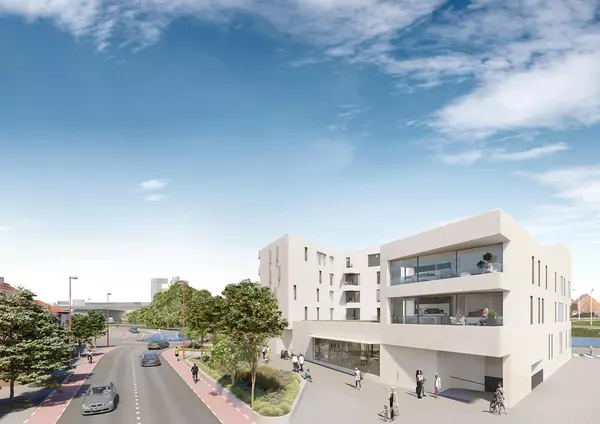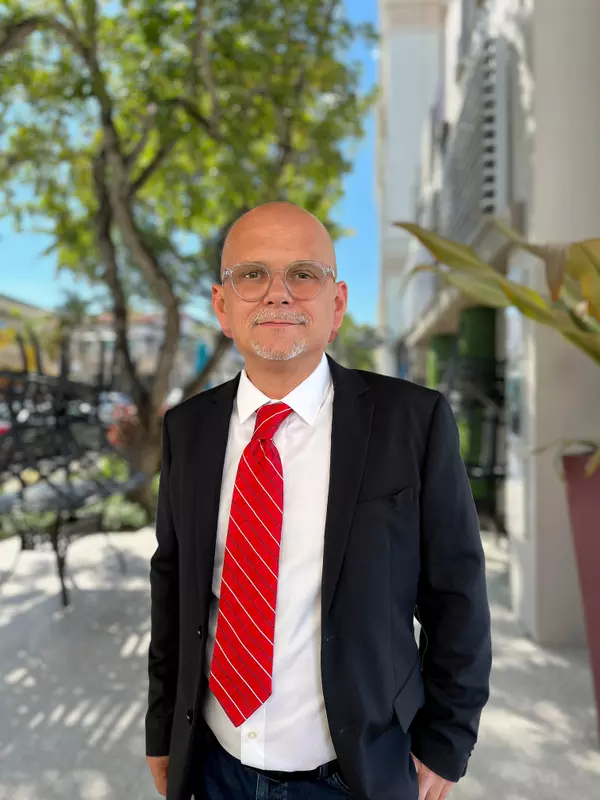Banking Giant Claims Miami Is Most at Risk of a Housing Bubble—Here’s Why Experts Say It Could Be Wrong
A new study from a leading international investment bank identified Miami as the city facing the highest risk of a housing bubble worldwide—but analysts, academics, and economists argue the findings do not tell the whole story.
This year's UBS Global Real Estate Bubble Index ranked the Magic City No. 1 for bubble risk, followed by Tokyo and Zurich, based in part on the disparity between the price of for-sale homes and rents in these markets.
However, Eli Beracha, director of the Tibor and Sheila Hollo School of Real Estate at Florida International University, tells Realtor.com® the UBS report doesn't offer an accurate portrayal of Miami's housing market.
Ana Bozovic, a Miami-based real estate agent and founder of Analytics Miami, goes even further, accusing the Swiss bank of using Miami as "clickbait" and "spreading sensationalist misinformation."
Realtor.com has reached out to UBS for comment on these critiques and is awaiting a response.
The annual UBS study, which analyzed residential property prices in 21 major cities worldwide, also found that Los Angeles, Dubai, Amsterdam, and Geneva face elevated housing bubble risks.
The cities are ranked based on their "bubble risk" scores, which are the weighted averages of five metrics: price-to-income and price-to-rent ratios; change in mortgage-to-GDP ratio; change in construction-to-GDP ratio; and city-to-county price ratio.

The bubble risk scores range from below 0.5 to above 1.5. Cities with ratings above 1.5 are considered at high risk of a housing bubble, and those between 1 and 1.5 face elevated risk. Ratings between 0.5 and 1 indicate moderate risk, and anything below 0.5 signals low risk.
This year, Miami earned a score of 1.73, boosting the Sunshine State metro to the top of the ranking. Tokyo landed in the No. 2 spot with a bubble risk score of 1.59, just ahead of Zurich with a 1.55 rating. Los Angeles came in fourth with a rating of 1.11.
Why is Miami deemed most at risk?

According to the report from UBS' Chief Investment Office, the term "bubble" refers to "a substantial and sustained mispricing of an asset, the existence of which cannot be proved unless it bursts."
Typical signs of a housing bubble include a decoupling of home prices from local economic fundamentals such as incomes and rents.
The 28-page report claims that over the past 15 years, Miami has experienced the steepest home price growth among all the cities in the study when adjusted for inflation.
However, the boom has cooled over the past four quarters, with price growth softening, the authors of the study maintain.
Despite affordability for buyers being at near-record lows, home prices have continued to diverge from rents. The report states that Miami's current "price-to-rent ratio has surpassed even the extremes of the 2006 property bubble, signaling a high bubble risk."
What the 'bubble risk' rating overlooked
However, Beracha argues that evaluating Miami’s housing market based solely on incomes earned within the city—as reflected in data from the U.S. Bureau of Economic Analysis—is a misguided approach.
"In Miami, we know that a lot of the income that is earned here, probably more than other cities, is not necessarily reported," says the Florida International University professor. "So a lot of people are really making more money than it is reported."
On a related note, Beracha points out that being an international hub, Miami has a significant number of buyers who earn their incomes out of state—or even abroad—before bringing those funds into the popular coastal city to purchase property.
"If somebody's bringing wealth from, let's say, Brazil, or any other country or another city, they're not necessarily earning the money here, or they didn't make the wealth here, but they're bringing it here," says Beracha.
For those reasons, according to Beracha, the price-to-income metric is not applicable to Miami.
"Therefore, I think [UBS'] ranking is biased," he adds.
Additionally, the real estate researcher points out that while it is true that housing in Miami is expensive, local home prices are not as inflated as the UBS index seems to suggest.
The latest available data from Realtor.com shows that as of July, the typical home in Miami sold for $496,000, up roughly 1.2% year over year.
As of September, the median list price in the city registered at $499,900, down 4.8% compared to a year ago, according to the monthly housing market trends report.
Echoing Beracha, Realtor.com senior economist Jake Krimmel says the UBS methodology misses two key factors about Miami: 1) focusing only on local economic fundamentals overestimates downside risk while ignoring Miami's international appeal, and 2) Miami homeowners have proven to be particularly patient and price-anchored despite the housing market's slowdown, as evidenced by a surge in local delistings.
"Sellers are in a stronger financial position than the 30,000-foot view would suggest, which provides a backstop for further price declines," says Krimmel. "The market may remain slow, but we are not likely to see real estate values crater."
Cash is still king in Miami
On top of that, Beracha says the Swiss bank's report does not take into account the robust cash buyer segment of Miami's housing market.
According to a new report from Realtor.com, in the first half of 2025, Miami led the nation in all-cash deals, at 43%. Looking at the luxury tier of homes above $1 million, more than 53% of those transactions involved cash purchases.
"The power of cash is such that if you have enough people that are buying with cash, that is a very big support for housing prices," Beracha says. "You do not see crashes in housing when people buy in cash. You see crashes when there is overleveraging, where people borrow too much and then all of a sudden they cannot afford a debt."
Bozovic, with Analytics Miami, strongly agrees.
"The report fixates on the pace of price growth, which is a deeply reductive lens," she argues. "It never once mentions Miami's extremely high level of all-cash buyers. Ignoring that fact while labeling the market a bubble shows a complete misunderstanding of Miami’s fundamentals."
Bozovic adds that the UBS index also overlooks Miami's very low distressed property rate, inventory still below pre-pandemic levels, and the continued inflow of residents from high-tax states, all of which support sustained buyer demand.
"In reality, Miami’s housing market is not driven by speculative debt or unsustainable leverage," adds Bozovic. "Miami is not a bubble. Prices are supported by real capital, strong domestic and international demand, and limited supply. The UBS report completely failed to recognize these fundamental truths and turned Miami’s success into a tragically misconstrued headline."

Beracha points to a recent influx of high earners, including global soccer icon Lionel Messi, whose Miami portfolio includes four condominium units at the Cipriani Residences Miami, and Amazon billionaire Jeff Bezos, who owns three properties with a total value of $234 million on Indian Creek Island.
"They can be anywhere they want, but Miami becomes increasingly the city of choice that brings here more wealth, more spending power, and that is really the metric," says the FIU professor. "The problem with that is that it's very hard to get data on that."
Not a bubble but a balloon
Krimmel says that while the UBS study is correct to say that the Miami housing market has cooled off significantly from the COVID-19 pandemic-era boom, he argues that it does not signal a looming bubble, but rather a gradual market correction.
"It was not a bubble bursting, but rather the air slowly coming out of the balloon," says the economist. "The silver lining of Miami’s dynamics is the market has been cooling in a slow and controlled way, rather than a 2008-style crash."
The latest research from Realtor.com shows that Miami is currently the slowest major U.S. housing market, with the typical home there waiting for a buyer 89 days as of September, 16 days longer than a year ago.
Additionally, Miami's active inventory last month was 16.3% higher than in September 2024.
But Beracha says the inventory growth and longer days on the market have not reached "alarming" levels. He also argues that using pandemic-era figures as a benchmark is wrong because the Miami market was overheated at the time, driven by historically low mortgage interest rates and soaring prices.
When the interest rates started climbing in 2022, the academic says it naturally led to a slowdown in local real estate purchasing.
"It is normal that people take some time, a breather, trying to figure out the market," he says.
Miami also currently leads the nation in the number of listings being taken off the market—a metric signaling that sellers are willing to wait out the slowdown rather than compromise on price, and one that Krimmel says implies a low level of seller distress.
Report authors acknowledge Miami's strength
Bozovic takes particular issue with what she calls the UBS report's "internal contradictions," beginning with its definition of a bubble risk as "the prevalence of a risk of a large price correction."
Yet, she notes that later in the report, its authors write that "while price growth is expected to turn negative in the coming quarters, a sharp correction appears unlikely at this stage."
In other words, while UBS considers Miami to be at the highest risk of a housing bubble, it does not predict that the bubble will burst anytime soon.
In fact, the report states that "Miami’s coastal appeal and favorable tax environment continue to attract newcomers from the US West and Northeast, with real estate prices still well below those in New York and Los Angeles. International demand—particularly from Latin America—remains robust, especially in the luxury oceanfront condo market."
Looking ahead, Beracha expects the Miami housing market to maintain a slow but steady pace over the next six to 12 months.
"I don't expect housing prices to spike. I don't expect them to fall significantly," he says. "I expect them to probably stay roughly where they're at, slightly higher, perhaps slightly lower. That's part of the process."
Categories
Recent Posts










GET MORE INFORMATION

Stevan Stanisic
Real Estate Advisor | License ID: SL3518131
Real Estate Advisor License ID: SL3518131
